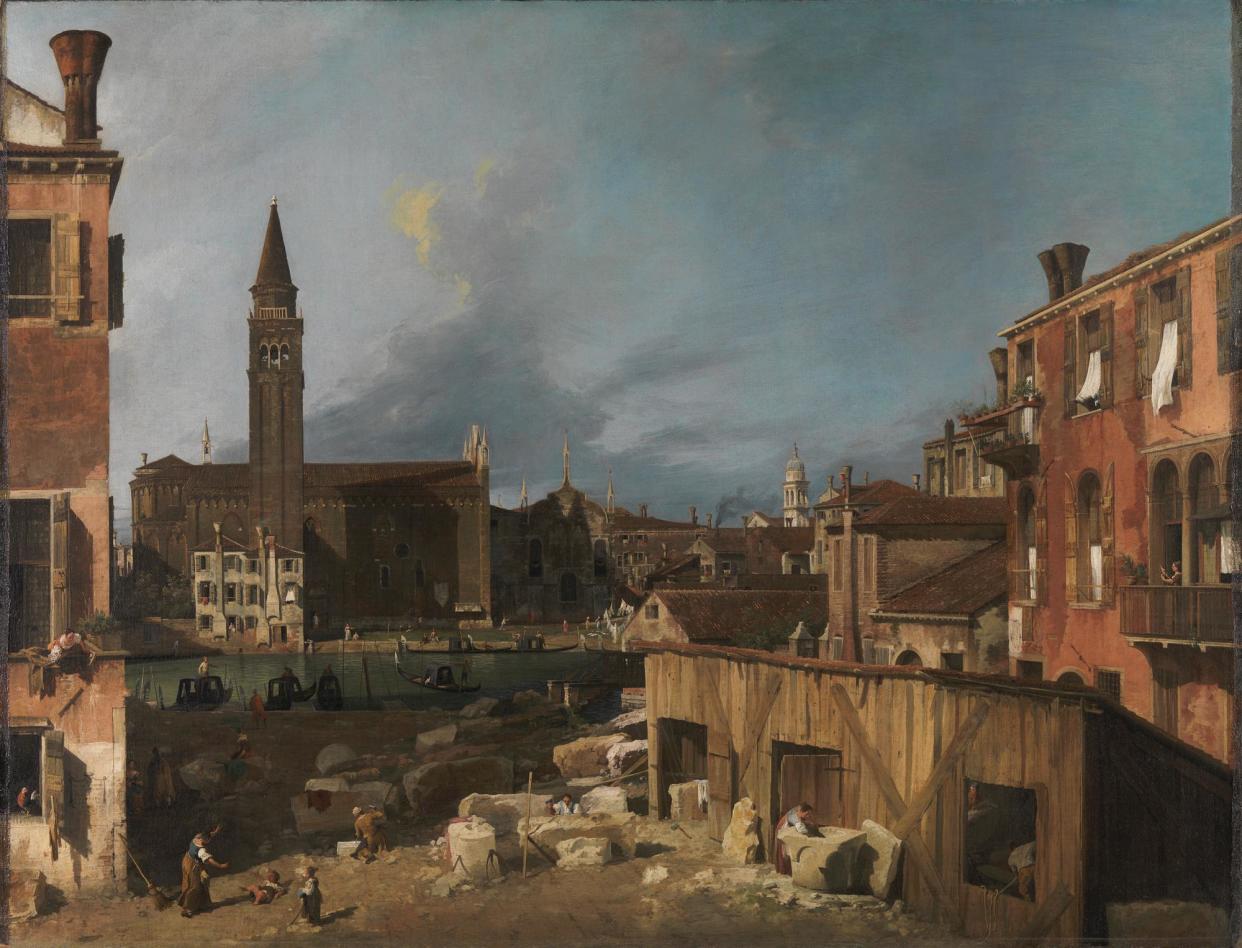Canaletto masterpiece returns to Wales 80 years after it was hidden in slate mine

During the second world war, the painting was transported 250 miles from central London to north Wales to be hidden in a slate mine, tucked away from the perils of Nazi invasion and Luftwaffe bombings.
Eighty years on, there has been a sort of homecoming for Canaletto’s masterpiece The Stonemason’s Yard as it returns to form the centrepiece of a show opening this week at the National Library of Wales in Aberystwyth.
The painting, an early work of the 18th-century Venetian artist, was among the treasures moved from the National Gallery in London to the cavernous Manod slate mine, near Blaenau Ffestiniog, in 1940 for safekeeping.
Back now in more comfortable circumstances, it has been hung in the library’s Gregynog Gallery, surrounded by almost 100 works spanning more than 250 years from the institution’s own collection.
“It looks amazing,” said Mari Elin Jones, the library’s interpretation officer. “It does feel like a kind of homecoming.”
As the second world war loomed, institutions such as the National Gallery began to plan what to do with their treasures. One proposal was for them to be evacuated to Canada, but the possibility of U-boat attacks was a worry and Winston Churchill ruled: “Hide them in caves and cellars, but not one picture shall leave this island.”
The Manod mine fitted the bill. Explosives were used to enlarge the entrance to accommodate the largest paintings and brick “bungalows” were built within the caverns to protect the paintings from variations in humidity and temperature.
Special cases were constructed to safely transport the paintings, including the Canaletto, on trucks to Wales. By the summer of 1941, the collection had been spirited away to its subterranean shelter, where it was to remain for four years.
There were bonuses. Jones said: “They had to control the climate within the quarry to make sure that these paintings were fine. They learned a lot about humidity control and temperature control and how that affected works. It was more than just stick them in, stick them in a quarry and hope they’re all right.”
The Canaletto, which is being loaned as part of the National Gallery’s 200th anniversary celebrations, is unusual within the artist’s oeuvre. Rather than focusing on pomp and pageantry, it presents the life of ordinary people. The Campo San Vidal in Venice has been temporarily turned into a stonemason’s yard, strewn with blocks of stone and tools, as figures labour in early morning sunshine.
When Jones went to view the painting in London she was at first puzzled at how it would work as part of a show in Aberystwyth.
“I remember looking at it and thinking, oh my gosh, how am I going to build an exhibition around a landscape of Venice? How on Earth do I get that to work within the collection that we have?” Those working people were the key.
“It is a beautiful portrait of a city, but it’s also a lovely portrait of the people that made that city, a celebration not only of the picturesque but of industry as well. When you look at Welsh landscapes, it is that balance of the picturesque and the industrial.
“Industry has shaped the way our country looks and shaped modern Wales. We’d be nothing without our industry. And so those themes then, it was a great springboard then to look at our own collection of Welsh landscapes.”
The exhibition, Idyll and Industry, includes works by 18th- and 19th-century artists such as Richard Wilson, Penry Williams and JMW Turner, alongside more modern pieces by the likes of Graham Sutherland, Mary Lloyd Jones and Ernest Zobole. “It’s a real celebration of the Canaletto but also of our own collection,” said Jones.
The exhibition runs at The National Library of Wales from 10 May until 7 September 2024.


